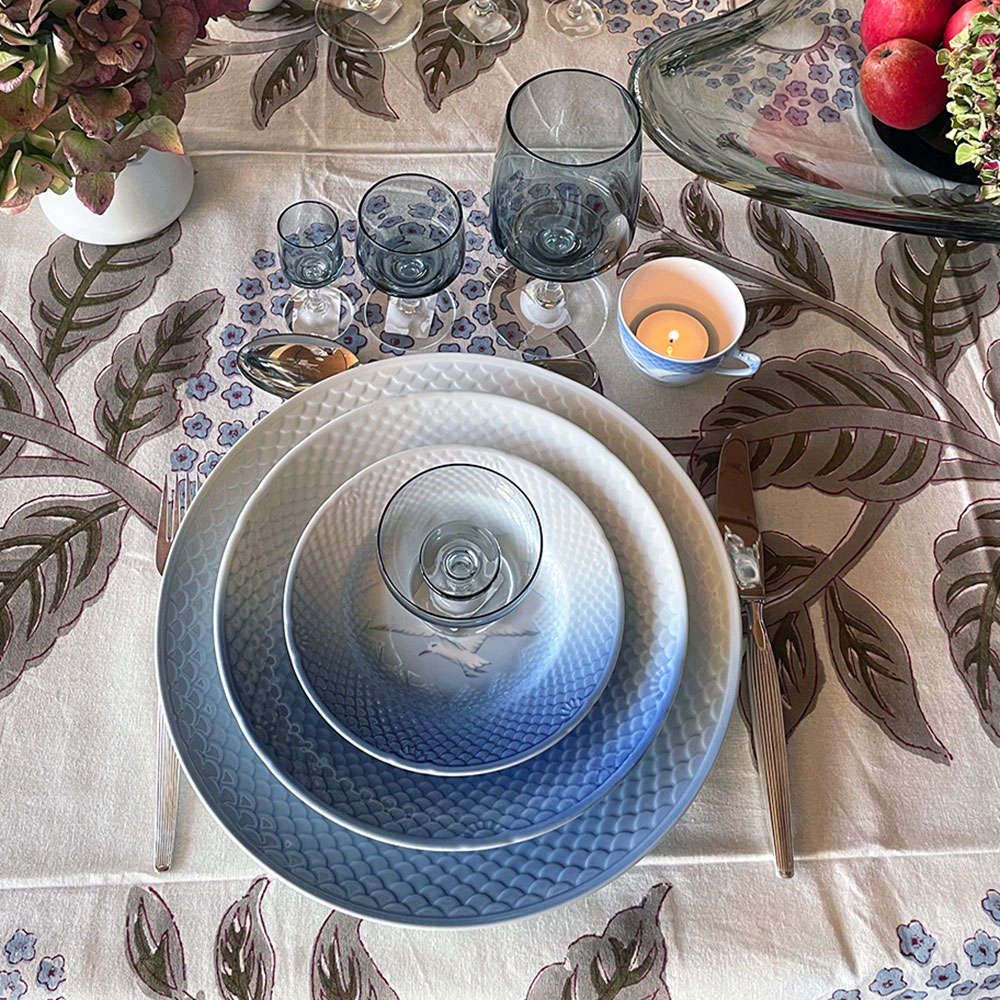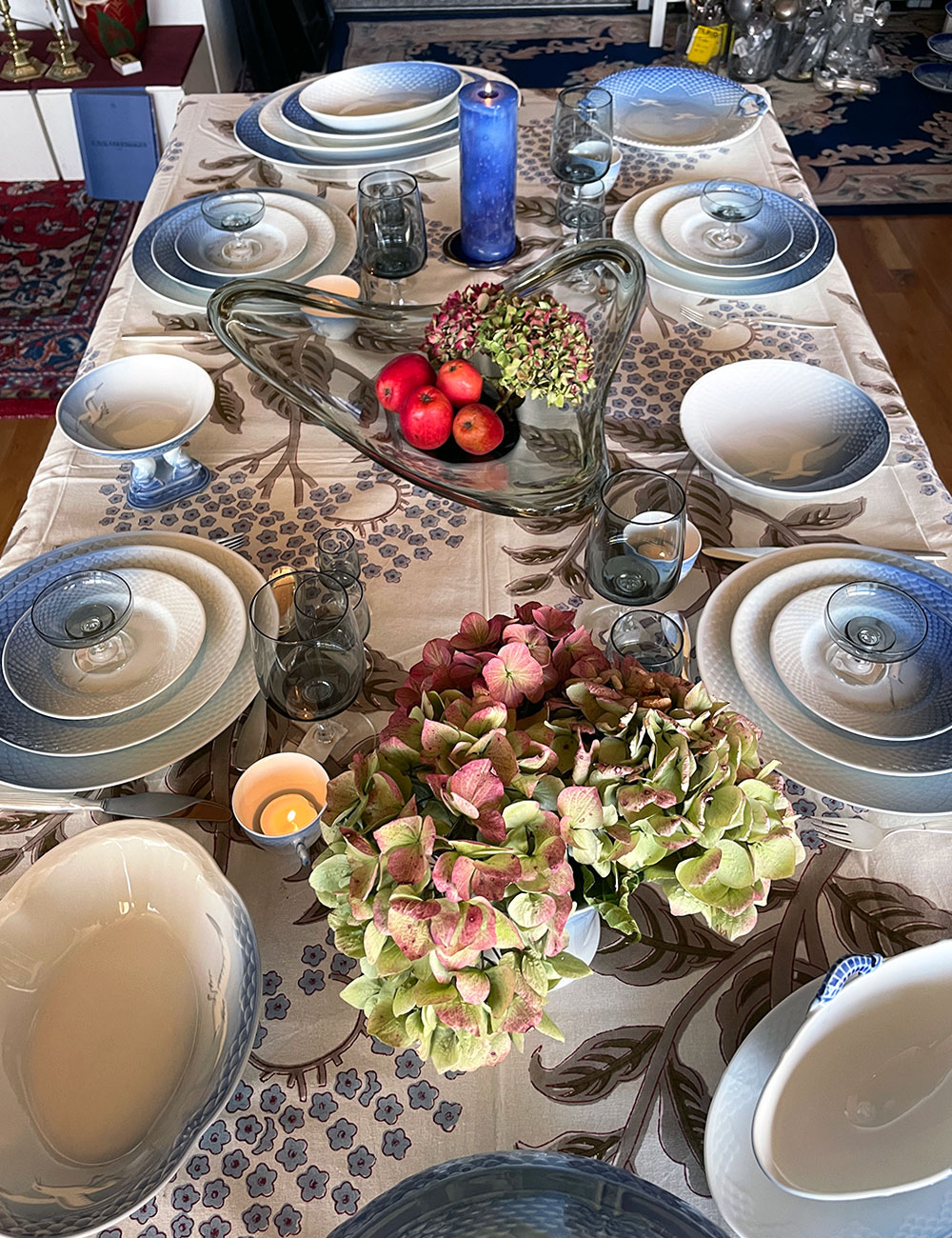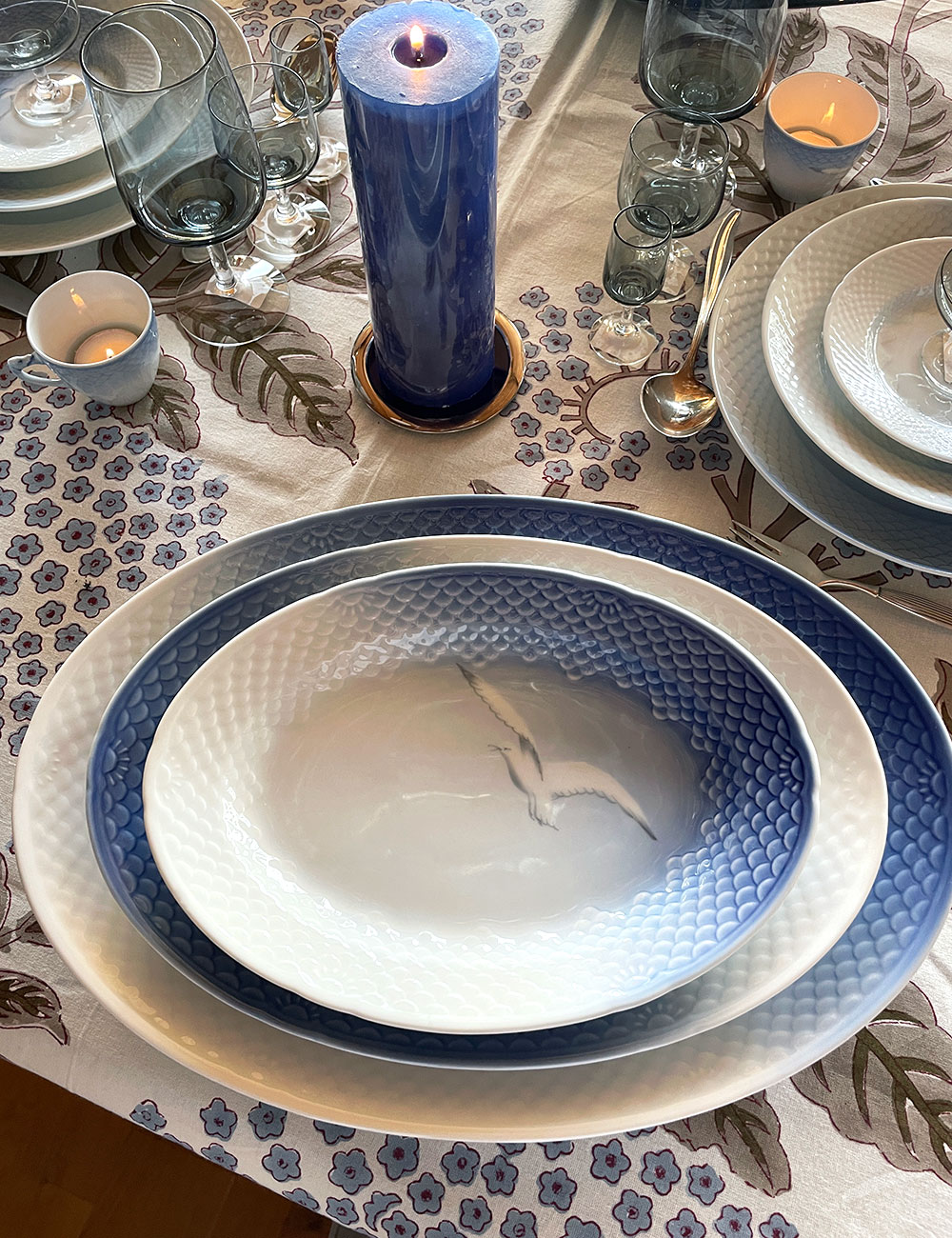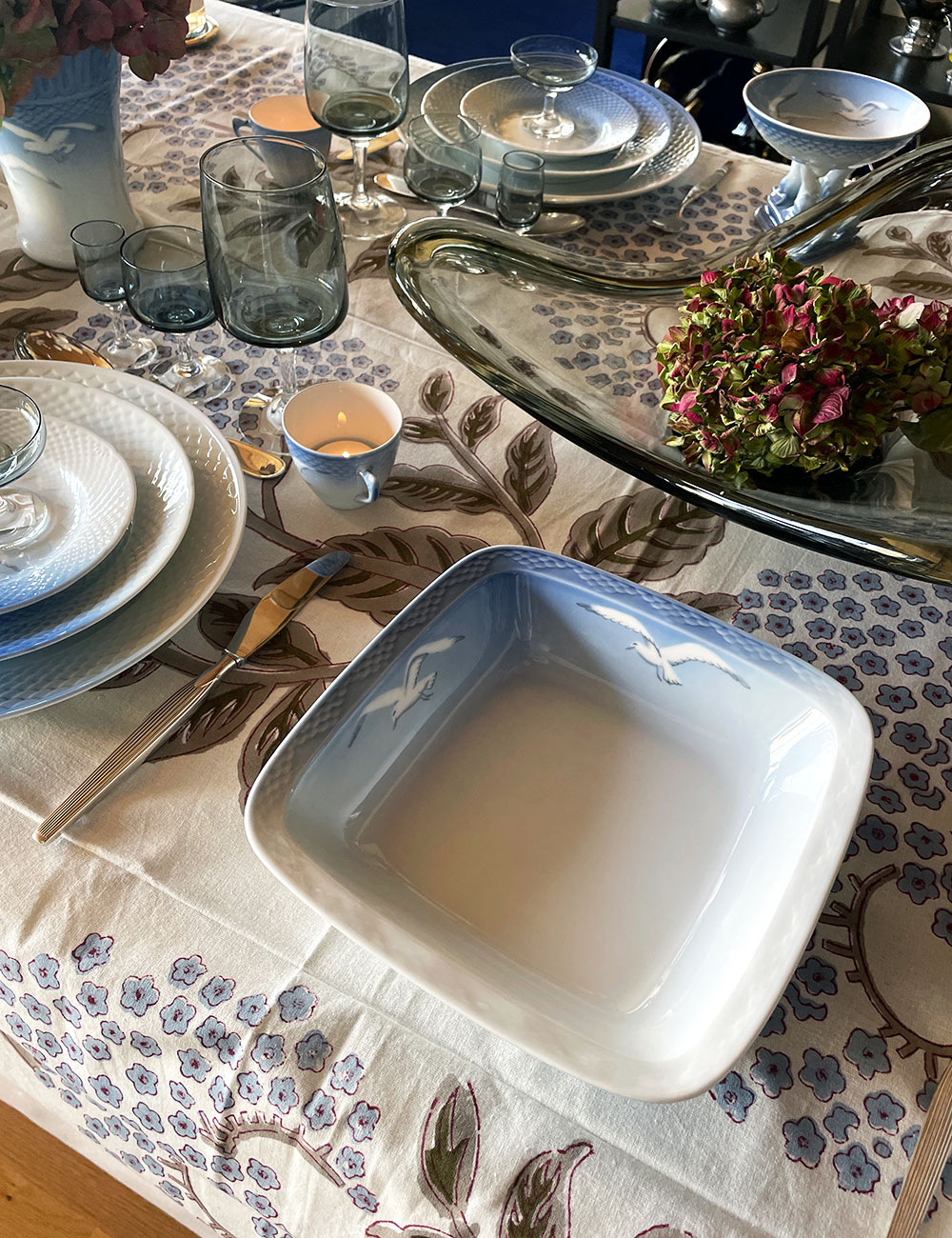A Timeless Tribute to Danish Coastlines
The Seagull dinnerware, created by Fanny Garde in 1895, holds a special place in Danish culture and design. Produced both without and with gold detailing, this set is known for its beautiful hand-painted seagulls gliding over a light blue background. The version without gold trim has gained popularity in recent years, as it’s dishwasher-safe and perfectly suited for modern, minimalist interiors.
Each piece of Seagull dinnerware without gold trim is unique, with subtle variations in the positioning and expression of the seagulls—adding a charming detail that reflects the careful craftsmanship. Ideal for both everyday use and special occasions, this set brings a touch of classic Danish nature to any summer house or home.
A Unique Danish Design Heritage
The distinctive form of the Seagull dinnerware was developed in the 1880s by August Hallin and is characterized by its unique design: a delicate blue shade that fades to white towards the top, a scalloped edge, and seahorse-shaped handles. This design became the perfect canvas for Fanny Garde’s artistic additions in 1895, making the hand-painted seagulls in flight the set’s iconic motif.
Fanny Garde drew inspiration for the decoration from her studio, where a feeding station outside her window attracted a flock of black-headed seagulls daily, allowing her to observe them closely. The result was the hand-painted seagulls on the dinnerware, giving it a lively and authentic character—no two seagulls are exactly the same. The set quickly gained popularity both in Denmark and internationally and is now regarded as one of the most iconic Danish sets, reflecting a timeless connection to the beauty of nature and the detail-rich craftsmanship that defines classic Danish design.

Nordic Style and Timeless Charm
The Seagull dinnerware without gold trim helped usher in the Art Nouveau era in Denmark and, with its simple, minimalist aesthetics, has maintained its popularity across generations. The service combines a unique retro quality with a modern and relaxed look that appeals especially to those who prefer a more casual style compared to the classic gold-trimmed versions. The set’s timeless charm and clean design make it a favorite in both modern and traditionally decorated homes—an iconic piece of Danish design that brings Scandinavian simplicity and elegance to any table setting.
Practical and Durable – Perfect for Everyday Use
The Seagull dinnerware without gold trim is made for daily use! - Without the gold details, it can be washed in the dishwasher, making it a practical choice for modern life, where both functionality and beauty matter. Made with underglaze, the porcelain is durable and easy to maintain—unlike the gold-trimmed version, which is best washed on a gentle cycle or by hand to preserve the gold.
Additionally, the Seagull dinnerware without gold trim is a sustainable choice, as many of these sets have already left their climate footprint. Choosing pre-owned sets brings both style and care to the table, adding a special story to your meal. With the Seagull dinnerware without gold trim, you don’t just get an iconic piece of Danish design—you also choose a climate-friendly option filled with soul and history, perfect for cozy moments with family and friends.

Facts about Bing & Groendahl Seagull Dinnerware without Gold Trim:
Who produced the Seagull dinnerware without gold trim?
Who designed the Seagull dinnerware?
- The Seagull dinnerware was designed by Danish artist Fanny Garde in 1895. Her work on the Seagull dinnerware marked the beginning of the Art Nouveau style in Danish porcelain, creating a timeless classic in Danish design.
How long has the Seagull dinnerware been in production?
- The Seagull dinnerware was introduced in 1895 and has since been a staple of Danish porcelain tradition, with both gold-trimmed and non-gold-trimmed versions. It is no longer produced and can therefore only be purchased used.
Is the Seagull dinnerware dishwasher-safe?
-
Yes, the Seagull dinnerware without gold trim can be washed in the dishwasher, as it is made with underglaze and without gold details that could wear off in machine washing. The gold-trimmed version is best washed on a gentle cycle or by hand to preserve the gold.
How old is the Seagull dinnerware?
- The Seagull dinnerware was designed in 1895, making it over 125 years old as a Danish design classic.
Is the Seagull dinnerware hand-painted?
- Yes, the Seagull dinnerware is hand-painted, which makes each piece unique with slight variations in the expressions and tones of the seagulls.
Is the Seagull dinnerware without gold trim popular?
- Yes, the Seagull dinnerware is highly popular both in Denmark and internationally, valued for its timeless charm and connection to Danish design heritage. Previously, the gold-trimmed version was the most popular, but today the non-gold-trimmed version is in demand.
What is the Seagull dinnerware without seagulls called?
- It is called Blue Tone. Bing & Groendahl Blue Tone was designed around 1900 with the same scalloped pattern as the Seagull dinnerware but without seagulls. Blue Tone is known for its simple blue and white colors and is often referred to as “Seagull without seagulls.”
What dinnerware complements the Seagull dinnerware without gold trim?
- Seagull without gold, Seagull with gold trim, Blue Tone, and the Greenland set all complement each other, as they share the same colors and scalloped pattern.



See also:
Blue Flower Tableware


 We are e-approved
We are e-approved





